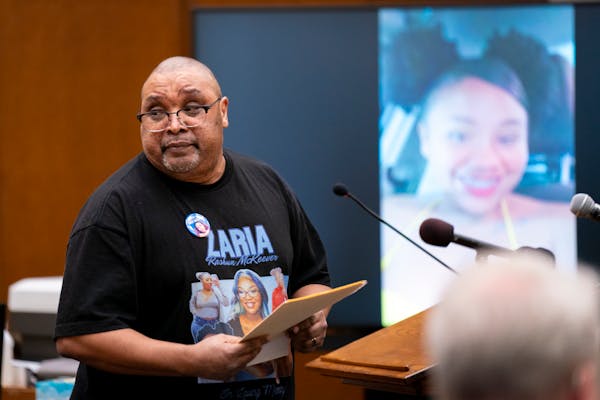Ananya Dance Theatre's world premiere of "Michhil Amra — We Are the Procession" brought the spirit of protest into St. Paul's O'Shaughnessy auditorium over the weekend, addressing our current moment.
Working with stage director Marcus Young and a host of collaborative artists and designers, artistic director and choreographer Ananya Chatterjea used movements to express the anxiety of living in this world. In early sections, the dancers convulsed and crawled on the floor. Later, they'd spin in circles, almost in an effort to uproot from binding social norms.
The choreography illustrated beautiful moments of connection among the dancers, with a mix of lyrical, broad movements, warrior-like stomping and moments of acrobatic flourish. Noelle Awadallah and Parisha Rajbhandari performed an especially transfixing duet.
Playing various instruments of his own making, including one made of numerous Bundt cake pans and a glow in the dark didgeridoo, Douglas R. Ewart served as a spiritual presence in the work. His music added to the captivating score designed by Greg Schutte featuring three vocalists, live instrumentalists and bols (a syllabic accompaniment similar to jazz's scatting) recorded by Chatterjea.
Ewart, along with spoken word artist Douglas Kearney, broke the fourth wall, with the musician wandering through the lobby before the show, and the poet instigating call and response from the audience. Kearney also led the crowd to read the names from pieces of paper it had been given when entering the theater. The names were of Black people who had been killed by police.
The dancers also engaged the audience directly, instructing those in the front few rows to perform a gesture of crossing their wrists above their heads. Another group was invited to the stage, where they sat for the remainder of the performance.
Laichee Yang's colorful set evoked the painted boards in the Twin Cities during the civil unrest following the murder of George Floyd. The set also featured a painting by artist Jordan M. Hamilton that looked like it could have been one of the many works of protest art at that time.
One of the questions that arose during the turbulence of 2020 was what role the arts played in shaping future narratives. The answer came up repeatedly during "Michhil Amra."
Chatterjea has spent her career addressing oppression, environmental justice, violence and inequality. Her latest piece continues this trajectory.
This isn't art that's necessarily going to change someone's mind. This is art for people who already care about social justice issues, and who seek creative imaginings of how to make this world better.

